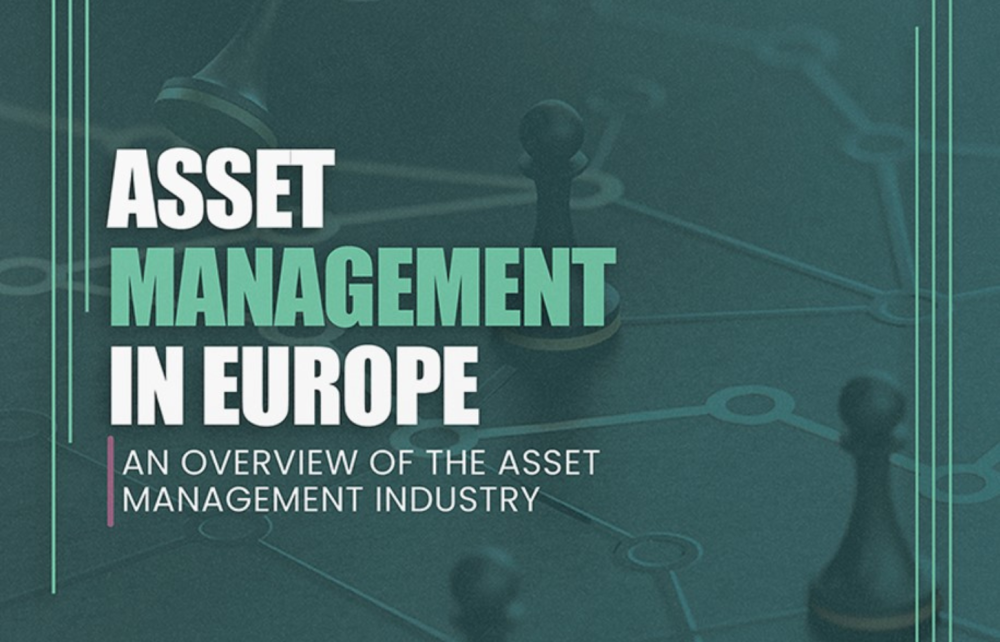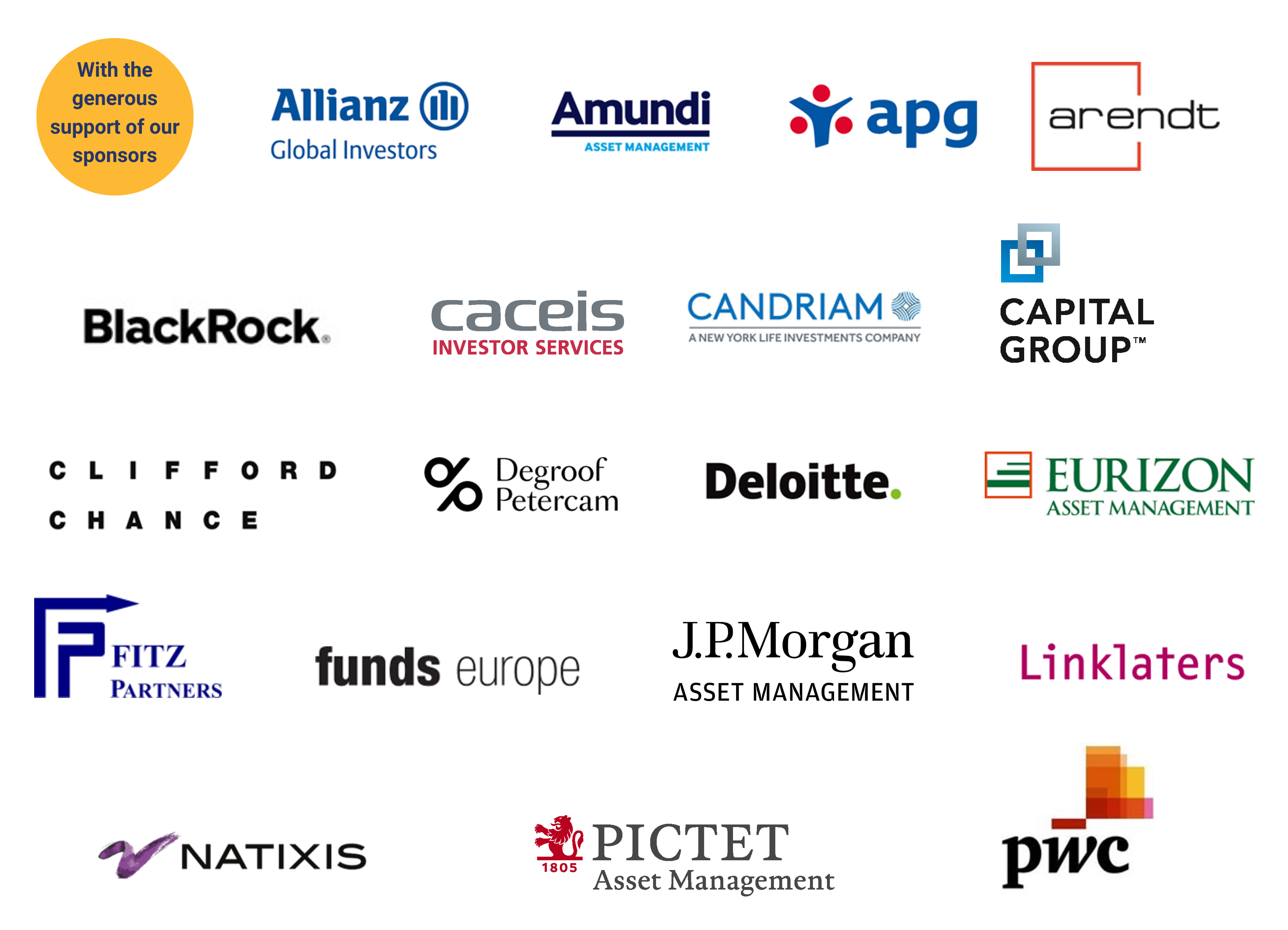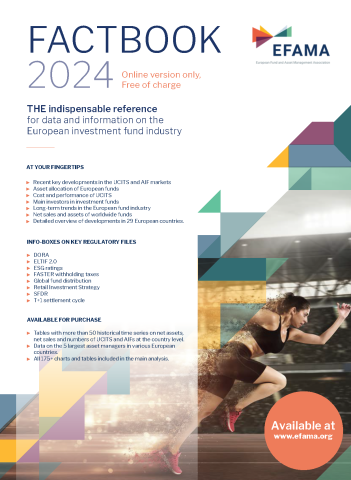In our latest Monthly Statistical Release, we show the main developments for the European investment fund market in December 2024 and include a first overview and analysis of the full year 2024.
With European government no longer able to provide financial security to support citizens in later years, saving for retirement is key. Individuals need to save enough for retirement to ensure adequate income in old age.
EFAMA helps by raising awareness of the importance of saving for retirement and encouraging European authorities to further modernise relevant EU legislation. This includes strengthening competition in the occupational and personal pension markets, and fostering cross-border activities of pension providers and asset managers. Such legislation should seek to create economies of scale, to benefit savers.
EFAMA is a co-initiator of the European Retirement Week.

EFAMA has published a new Investor Education brochure, titled “Invest Early, Achieve Big – Five questions on investing to build wealth over time”.
Two leading experts in the field of investor education - Professor Luigi Guiso and Anne Lester - provide insightful answers to five fundamental questions about investing.
In addition, five European citizens from diverse backgrounds, age groups, and careers share their personal experiences and approaches to investing in practice.

EFAMA's 16th edition of its ‘Asset Management in Europe’ report provides an in-depth analysis of recent trends in the European asset management industry. It highlights the growth of retail and passive investing, and how asset managers finance the European economy. In addition to data on assets under management in investment funds and discretionary mandates, industry clients, asset allocation and industry organisation, this report addresses key industry questions, including:

EFAMA’s publication lays out the asset management sector’s policy priorities for the next five years, building on the in-depth expertise of our members. This includes practical recommendations for keeping Europe competitive and developing deeper, more integrated and liquid capital markets in Europe.

Despite the growing interest and importance of sustainable investing, most EU citizens often find it difficult to navigate this relatively new investment landscape.
EFAMA has published a brochure in which we explore what sustainable investing is; what investment strategies are available; what impact you can have as on investor; what questions you should be asking your self and your financial advisor; and how to get started.

Financial literacy is essential for making sound decisions when managing savings. If European citizens do not understand financial concepts such as risk diversification, compound interest and real rate of return, they won’t know where to start or what to ask should they wish to invest their savings. A lack of sufficient financial literacy in most European countries helps explain why the vast majority of households don’t directly invest any of their savings in the capital markets.
EFAMA's Investor Education Platform has now produced an animated brochure titled ‘Investing for a better future – 5 tips to do more with your savings’ to help get people started with investing. It has been translated into several European languages.

With European government no longer able to provide financial security to support citizens in later years, saving for retirement is key. Individuals need to save enough for retirement to ensure adequate income in old age.
EFAMA helps by raising awareness of the importance of saving for retirement and encouraging European authorities to further modernise relevant EU legislation. This includes strengthening competition in the occupational and personal pension markets, and fostering cross-border activities of pension providers and asset managers. Such legislation should seek to create economies of scale, to benefit savers.
EFAMA is a co-initiator of the European Retirement Week.

EFAMA has published a new Investor Education brochure, titled “Invest Early, Achieve Big – Five questions on investing to build wealth over time”.
Two leading experts in the field of investor education - Professor Luigi Guiso and Anne Lester - provide insightful answers to five fundamental questions about investing.
In addition, five European citizens from diverse backgrounds, age groups, and careers share their personal experiences and approaches to investing in practice.

EFAMA's 16th edition of its ‘Asset Management in Europe’ report provides an in-depth analysis of recent trends in the European asset management industry. It highlights the growth of retail and passive investing, and how asset managers finance the European economy. In addition to data on assets under management in investment funds and discretionary mandates, industry clients, asset allocation and industry organisation, this report addresses key industry questions, including:

EFAMA’s publication lays out the asset management sector’s policy priorities for the next five years, building on the in-depth expertise of our members. This includes practical recommendations for keeping Europe competitive and developing deeper, more integrated and liquid capital markets in Europe.

Despite the growing interest and importance of sustainable investing, most EU citizens often find it difficult to navigate this relatively new investment landscape.
EFAMA has published a brochure in which we explore what sustainable investing is; what investment strategies are available; what impact you can have as on investor; what questions you should be asking your self and your financial advisor; and how to get started.

Financial literacy is essential for making sound decisions when managing savings. If European citizens do not understand financial concepts such as risk diversification, compound interest and real rate of return, they won’t know where to start or what to ask should they wish to invest their savings. A lack of sufficient financial literacy in most European countries helps explain why the vast majority of households don’t directly invest any of their savings in the capital markets.
EFAMA's Investor Education Platform has now produced an animated brochure titled ‘Investing for a better future – 5 tips to do more with your savings’ to help get people started with investing. It has been translated into several European languages.

With European government no longer able to provide financial security to support citizens in later years, saving for retirement is key. Individuals need to save enough for retirement to ensure adequate income in old age.
EFAMA helps by raising awareness of the importance of saving for retirement and encouraging European authorities to further modernise relevant EU legislation. This includes strengthening competition in the occupational and personal pension markets, and fostering cross-border activities of pension providers and asset managers. Such legislation should seek to create economies of scale, to benefit savers.
EFAMA is a co-initiator of the European Retirement Week.

In our latest Monthly Statistical Release, we show the main developments for the European investment fund market in December 2024 and include a first overview and analysis of the full year 2024.
Today, the European Fund and Asset Management Association (EFAMA) published the 20th issue of its Market Insights series, titled “Beyond fund consolidation: a more promising strategy for bigger funds and faster cost declines in Europe”. This publication compares the size and number of equity UCITS with that of US equity mutual funds and challenges the commonly held belief that fund consolidation will significantly lower the cost of funds in Europe.
In its recently published market report on the costs and performance of EU retail investment products, ESMA asserts that there are “substantial differences in the fund cost level between the EU and the US”. In its accompanying press release, ESMA emphasizes that “the market inefficiencies revealed by this higher cost level show the need to focus on the competitiveness of EU markets, within a future Savings and Investments Union.”
EFAMA has today published its European Quarterly Statistical Release for the fourth quarter of 2024, together with an overview of the full year 2024.
EFAMA welcomes the FSB recommendation that jurisdictions develop domestic frameworks to monitor and mitigate the build-up of leverage. These analytical frameworks should take a holistic approach and be empirically driven. The main systemic risk stemming from leverage is the imbalance between liquidity demand and supply during periods of stress, not the (collective) default of non-bank financial intermediaries.
Yesterday, the European Commission published its first regulatory simplification Omnibus, which aims to reduce the sustainability reporting burden on EU companies through amendments to the Corporate Sustainability Due Diligence Directive (CSDDD), Corporate Sustainability Reporting Directive (CSRD) and EU Taxonomy Regulation. We support this initiative as a positive and necessary step to increase the competitiveness of European companies and reduce regulatory burden, while still maintaining the ambitions of the EU Green Deal.
Positive developments include:
In our latest Monthly Statistical Release, we show the main developments for the European investment fund market in December 2024 and include a first overview and analysis of the full year 2024.
Today, the European Fund and Asset Management Association (EFAMA) published the 20th issue of its Market Insights series, titled “Beyond fund consolidation: a more promising strategy for bigger funds and faster cost declines in Europe”. This publication compares the size and number of equity UCITS with that of US equity mutual funds and challenges the commonly held belief that fund consolidation will significantly lower the cost of funds in Europe.
In its recently published market report on the costs and performance of EU retail investment products, ESMA asserts that there are “substantial differences in the fund cost level between the EU and the US”. In its accompanying press release, ESMA emphasizes that “the market inefficiencies revealed by this higher cost level show the need to focus on the competitiveness of EU markets, within a future Savings and Investments Union.”
EFAMA has today published its European Quarterly Statistical Release for the fourth quarter of 2024, together with an overview of the full year 2024.
EFAMA welcomes the FSB recommendation that jurisdictions develop domestic frameworks to monitor and mitigate the build-up of leverage. These analytical frameworks should take a holistic approach and be empirically driven. The main systemic risk stemming from leverage is the imbalance between liquidity demand and supply during periods of stress, not the (collective) default of non-bank financial intermediaries.
Yesterday, the European Commission published its first regulatory simplification Omnibus, which aims to reduce the sustainability reporting burden on EU companies through amendments to the Corporate Sustainability Due Diligence Directive (CSDDD), Corporate Sustainability Reporting Directive (CSRD) and EU Taxonomy Regulation. We support this initiative as a positive and necessary step to increase the competitiveness of European companies and reduce regulatory burden, while still maintaining the ambitions of the EU Green Deal.
Positive developments include:
In our latest Monthly Statistical Release, we show the main developments for the European investment fund market in December 2024 and include a first overview and analysis of the full year 2024.
Today, the European Fund and Asset Management Association (EFAMA) published the 20th issue of its Market Insights series, titled “Beyond fund consolidation: a more promising strategy for bigger funds and faster cost declines in Europe”. This publication compares the size and number of equity UCITS with that of US equity mutual funds and challenges the commonly held belief that fund consolidation will significantly lower the cost of funds in Europe.
In its recently published market report on the costs and performance of EU retail investment products, ESMA asserts that there are “substantial differences in the fund cost level between the EU and the US”. In its accompanying press release, ESMA emphasizes that “the market inefficiencies revealed by this higher cost level show the need to focus on the competitiveness of EU markets, within a future Savings and Investments Union.”
EFAMA welcomes the opportunity to provide the views of the asset management industry to this challenging exercise of assessing the impacts of recent regulatory reforms in the area of financial services.
There are a number of general remarks that we would like to make by way of introduction.
Need for consistency and coordination
After having looked extensively at the Level-2 work done by the ESAs, EFAMA1 comes to the unfortunate conclusion that, due to the very technical nature of the underlying methodologies and calculations, there will not be enough time for market participants to fully implement the PRIIP KID by 31 December 2016.
Our corporate members are both subsidiaries of an EEA parent that is a credit institution as per Article 4(1)(1) of the CRR, or stand-alone investment firms as per Article 4(1)(2) of the CRR. Both types of entities risk becoming subject to the Maximum Ratio Rule as asset management companies licensed under either a UCITS or AIFM management company license, or licensed as investment firms under the MiFID regime to provide discretionary portfolio management services on a client-by-client basis.
EFAMA believes that the general assessment of the characteristics of automated financial advice tools is captured accurately.
The signatories share the following views:
• Securitisation is an important element of well-functioning financial markets. Prudently deployed and sensibly regulated, it can:
o act as a bridge between the banks’ financing and the capital markets;
o enable non-banks to diversify funding sources; and
o provide investors with high quality fixed income securities at attractive yields.
EFAMA is supportive of the general objectives of the PRIIP KID Regulation. We are however concerned about the very limited time that product manufacturers will have between the final technical rules (RTS) and essential guidelines being published and the deadline to produce Key Information Documents (KIDs) from 31 December 2016 onwards. Having provided extensive feedback throughout the ongoing Level-2 work, we seriously doubt there will be enough time for market participants to implement the final rules by the end of this year, as originally foreseen by the co-legislators.
EFAMA welcomes the opportunity to provide the views of the asset management industry to this challenging exercise of assessing the impacts of recent regulatory reforms in the area of financial services.
There are a number of general remarks that we would like to make by way of introduction.
Need for consistency and coordination
After having looked extensively at the Level-2 work done by the ESAs, EFAMA1 comes to the unfortunate conclusion that, due to the very technical nature of the underlying methodologies and calculations, there will not be enough time for market participants to fully implement the PRIIP KID by 31 December 2016.
Our corporate members are both subsidiaries of an EEA parent that is a credit institution as per Article 4(1)(1) of the CRR, or stand-alone investment firms as per Article 4(1)(2) of the CRR. Both types of entities risk becoming subject to the Maximum Ratio Rule as asset management companies licensed under either a UCITS or AIFM management company license, or licensed as investment firms under the MiFID regime to provide discretionary portfolio management services on a client-by-client basis.
EFAMA believes that the general assessment of the characteristics of automated financial advice tools is captured accurately.
The signatories share the following views:
• Securitisation is an important element of well-functioning financial markets. Prudently deployed and sensibly regulated, it can:
o act as a bridge between the banks’ financing and the capital markets;
o enable non-banks to diversify funding sources; and
o provide investors with high quality fixed income securities at attractive yields.
EFAMA is supportive of the general objectives of the PRIIP KID Regulation. We are however concerned about the very limited time that product manufacturers will have between the final technical rules (RTS) and essential guidelines being published and the deadline to produce Key Information Documents (KIDs) from 31 December 2016 onwards. Having provided extensive feedback throughout the ongoing Level-2 work, we seriously doubt there will be enough time for market participants to implement the final rules by the end of this year, as originally foreseen by the co-legislators.
EFAMA welcomes the opportunity to provide the views of the asset management industry to this challenging exercise of assessing the impacts of recent regulatory reforms in the area of financial services.
There are a number of general remarks that we would like to make by way of introduction.
Need for consistency and coordination
After having looked extensively at the Level-2 work done by the ESAs, EFAMA1 comes to the unfortunate conclusion that, due to the very technical nature of the underlying methodologies and calculations, there will not be enough time for market participants to fully implement the PRIIP KID by 31 December 2016.
Our corporate members are both subsidiaries of an EEA parent that is a credit institution as per Article 4(1)(1) of the CRR, or stand-alone investment firms as per Article 4(1)(2) of the CRR. Both types of entities risk becoming subject to the Maximum Ratio Rule as asset management companies licensed under either a UCITS or AIFM management company license, or licensed as investment firms under the MiFID regime to provide discretionary portfolio management services on a client-by-client basis.


Discover the 6 reasons why your organisation should become a member of EFAMA.
Our members enjoy significant benefits including the opportunity to shape the industry positions, get first-hand access to regulatory and political intelligence, engage with industry peers and policymakers, and take part in EFAMA events.
Our three membership categories cater to the wide range of organisations that make up and support the investment management industry in Europe.
